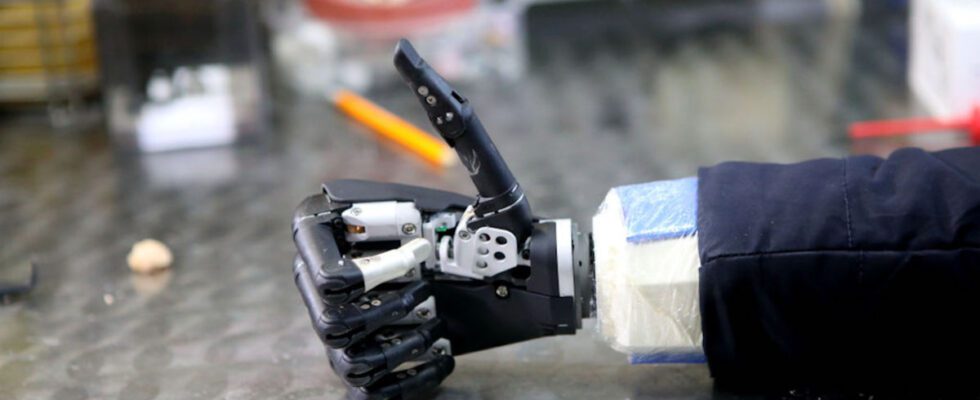Portraits of Albert Einstein hang on the walls of a makeshift lab on the outskirts of Nairobi, inspiring two self-taught Kenyan inventors who developed a bionic arm from electronic scrap. Cousins Moses Kiuna, 29, and David Gathu, 30, built their first prosthetic arm in 2012 after their neighbor lost a limb in a work accident.
But the duo did not stop there, and made many improvements for their latest prototype, a prosthetic bionic arm. The device uses headphones to pick up brain signals and convert them into electrical current, which is then sent to a transmitter that wirelessly relays commands to the arm. The whole thing takes less than two seconds.
“We have seen people living with disabilities facing many challenges and we wanted them to (feel) much more capable”David Gathu told AFP.
Two autodidacts who source themselves from the dump
According to the World Health Organization (WHO), among the poorest in the world, only one in ten people have access to these prostheses because of their prohibitive cost. “We have noticed that Kenya is importing prostheses which are expensive”argues Moses Kiuna. “So we asked ourselves: how can we solve our own problems?”he continues.
The answer came from an unusual place: the landfill. Since high school, the cousins have been scouring the dumps around the Kenyan capital in search of e-waste to reuse. The two friends learned on their own: David Gathu dropped out of school at 17, while Moses Kiuna quickly left the university benches.
The dusty shelves of the makeshift lab next to their grandmother’s house are filled with science books, while the tin walls are covered with paintings detailing human anatomy.
“We studied neurophysiology by reading books and sitting down with doctors to explain concepts to us”recalls David Gathu.
And this is just one of the many inventions imagined by the two cousins. During the Covid-19 pandemic, they built a device to sterilize banknotes using infrared technology. The cousins have also developed a green energy generator, which converts oxygen into electricity, with the aim of combating climate change.
innovation, “engine of the future”
“They are proof that Africans can make a significant contribution to technology and science as we know them”Judge Mukuria Mwangi, founder of the Jasiri Mugumo school in Nairobi.
Mukuria Mwangi, who regularly invites the two cousins to supervise the children of his establishment, aged 2 to 10, criticizes the Kenyan education system which, according to him, does not do enough to encourage innovation. “Innovation is not a discipline exploited in our schools, although it is the engine of the future”he argues.
The duo has so far failed to live off their inventions.
“We have many other ideas that we can make commercially viable, but we lack funding and support”laments David Gathu.
With this little media focus, things could quickly change.
